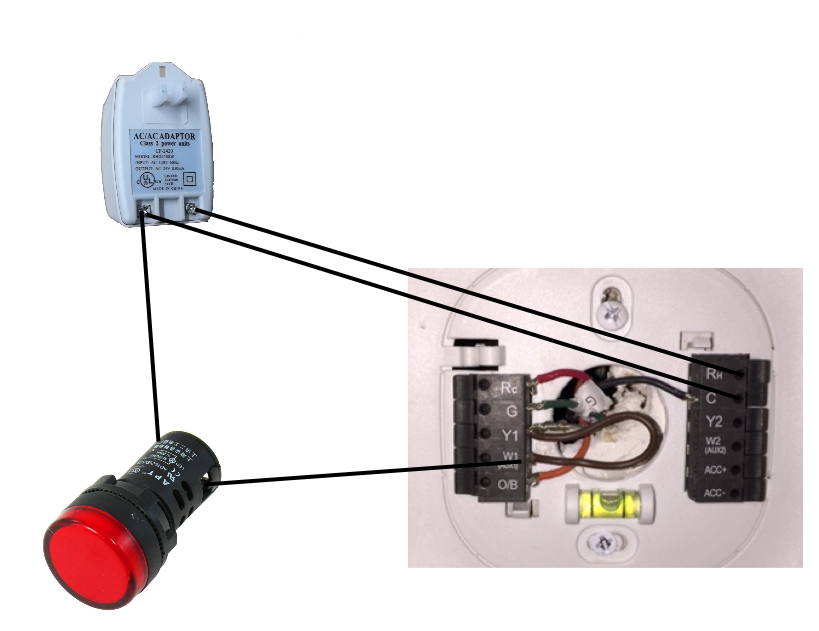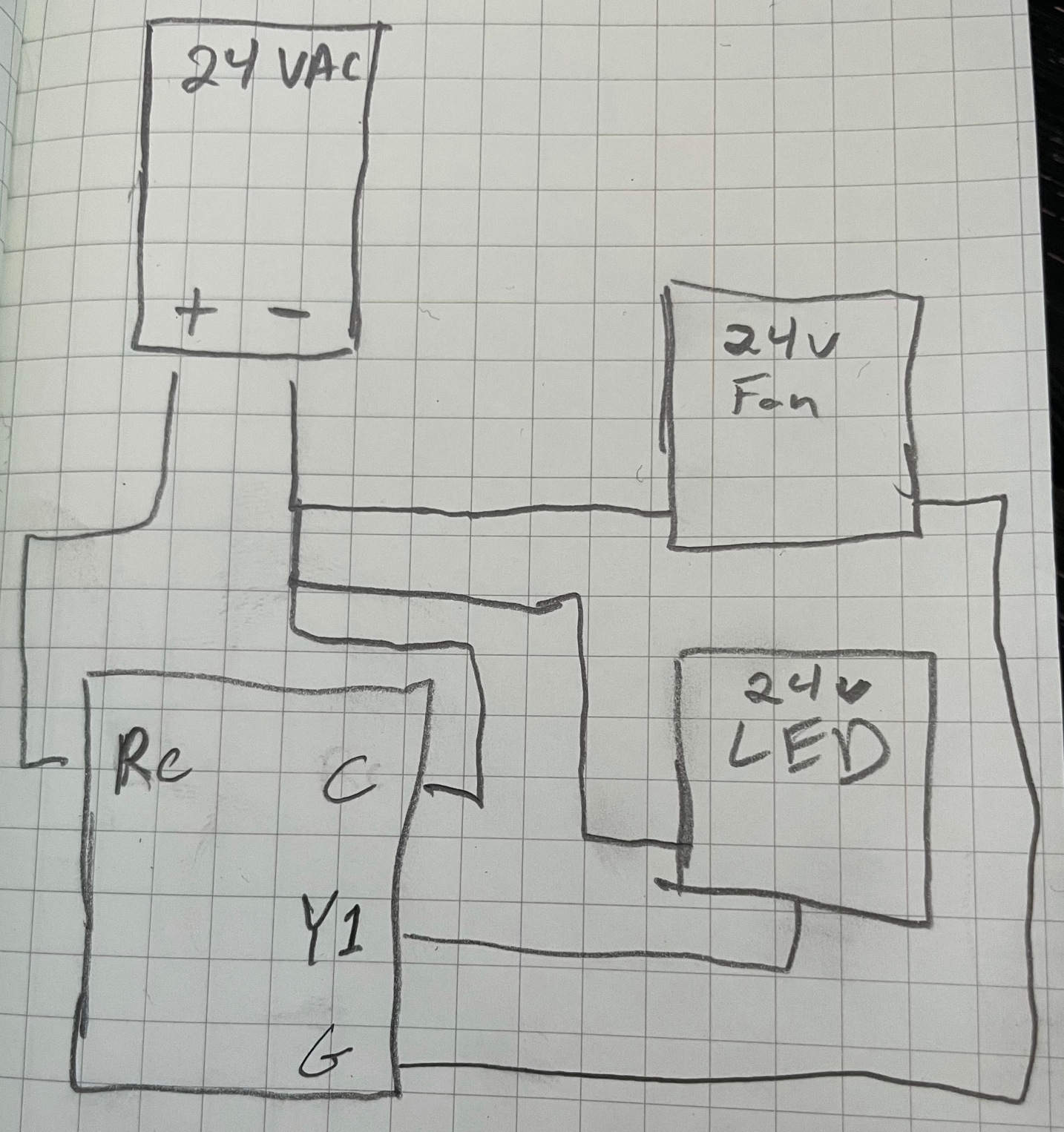Building a Mock HVAC for Smart Thermostat Demos
Update: I’ve added instructions for a cooling system at the bottom of this post.
Recently I needed to create a mock HVAC system so that I could have a portable smart thermostat for various demos. I searched around but couldn’t find any such thing. So with some sleuthing and the help of my friend Bruce Eckel I was able to build a simple system that powers a smart thermostat and simulates a heating system. This post will document how to do this in case anyone else ever needs such a thing.
Here is a quick demo:
Modern HVAC systems typically provide 24 volt AC power to thermostats so the first thing you will need is a 120 VAC (wall power) to 24 VAC transformer. I used this one:
Then you’ll need something that can simulate a single stage heating system. A smart thermostat uses 24 volt AC to flip on and off a relay (electronic component that uses one power current to toggle another, usually stronger, current). I could have used an actual relay for this but decided to go with something easier, a red LED light that runs on 24 volt AC:
For my smart thermostat I used an ecobee3 (due to their REST APIs) but a Nest should work as well:
Now to wire it together pick a terminal on the transformer to be the “common” and run two wires, one to the LED and one to the “C” terminal on the smart thermostat. Then run a wire from the other side of the LED to the “W1” terminal on the smart thermostat. And finally connect the other terminal on the transformer to the “Rh” terminal on the smart thermostat. Like this:

Here is what it looks like wired together:

Once the smart thermostat is powered on and setup, the LED should turn on when the “heater” is on:

And turn off when the heater is off:

Cooling System
The wiring for a cooling system is pretty similar to heating (and can be combined with the heating LED):

I grabbed these 24v LEDs so that I’d have a blue one to represent the cooling system:
I also grabbed a 24v fan to represent the fan:
Since the fan is DC and the power is AC, you will also need a converter, like:
That is it for wiring in a mock cooling system!
I hope that helps someone out. Let me know if you have any questions!